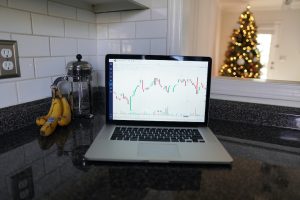Forex traders often search for opportunities to enter trades that have a high probability of success. One of the most sought-after types of trades is a reversal trade. A reversal trade is a trade where the price of an asset changes direction from its previous trend. Entering a reversal trade at the right time can be a profitable venture, but it is important to understand the key factors that influence the timing of such trades.
What is a Reversal Trade?
A reversal trade is a trade where a trader anticipates that the price of an asset will change direction from its previous trend. These trades are usually taken after a prolonged period of price movement in one direction, which is followed by a change in trend. A reversal trade is usually taken when the price of an asset approaches a support or resistance level, or when a technical indicator signals a change in market sentiment.
When to Enter a Reversal Trade?
The timing of a reversal trade is crucial as it determines the success of the trade. There are several factors to consider when entering a reversal trade, including market sentiment, technical analysis, and fundamental analysis.
Market Sentiment
Market sentiment refers to the overall mood or feeling of traders towards a particular asset. When market sentiment is bearish, traders are pessimistic about the future price of an asset, and when it is bullish, traders are optimistic about the future price of an asset. A reversal trade is usually taken when market sentiment changes from bearish to bullish or vice versa. A trader must closely monitor the market sentiment and determine when the sentiment is about to change.
Technical Analysis
Technical analysis is a method of evaluating the price action of an asset using charts and technical indicators. A trader can use technical analysis to identify key support and resistance levels, trend lines, and chart patterns. Technical analysis can help a trader to determine when a reversal trade is appropriate. A trader can use technical indicators such as the Relative Strength Index (RSI), Moving Averages, and Bollinger Bands to identify when a trend is about to reverse.
Fundamental Analysis
Fundamental analysis is a method of evaluating the economic and financial factors that affect the price of an asset. A trader can use fundamental analysis to determine when a reversal trade is appropriate. For example, if a company announces a positive earnings report, the stock price is likely to increase, and a trader can enter a reversal trade to benefit from this trend.
Conclusion
Entering a reversal trade can be a profitable venture, but it is important to understand when to enter such trades. A trader must consider market sentiment, technical analysis, and fundamental analysis to determine when a trend is about to reverse. A reversal trade is usually taken when the price of an asset approaches a key support or resistance level, or when a technical indicator signals a change in market sentiment. A trader must also use proper risk management techniques to minimize losses in case the trade does not go as planned.





